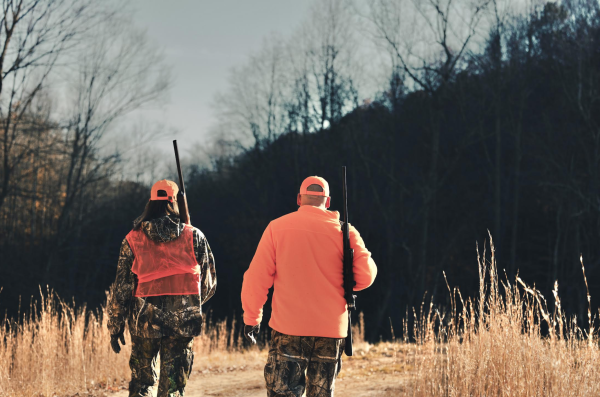Winter’s Challenge: Michigan Coyote Hunting
By Glen Wunderlich
Outdoor Columnist
Member Professional Outdoor Media Association
Hunting coyotes by conventional means has provided me with hours of satisfaction over the years, most of which have been quite humbling, however. I understand that trapping can be effective but it’s never been my thing. Hunting them with hounds is another means many hunters employ. But doing so requires plenty of land to be legal, because dogs don’t pay attention to private property rights. My experiences usually revolve around calling and marksmanship, but not always.
Years ago, on a warm and sunny afternoon in Shiawassee County, I set up for some woodchuck action in an alfalfa field not far from home, when I noticed a peculiar sight. Beyond the recently cut hay field several hundred yards from my position, a red-tailed hawk dived repeatedly over the fallow portion of the field. I couldn’t see what the object of its attention was because the weeds concealed its target. Moments later a coyote appeared in the open and I decided to dispatch it with my Ruger .300 Winchester magnum stoked with 110-grain Hornady spire points. Suffice it to say it did the job.
When I shared the experience with neighbor, Bob Bott, he didn’t believe me. “There’s no coyotes around here,” was his response. So, I took the Canis latrans to him for a first-hand look. He still didn’t believe me and said it was a fox. Bob, rest his soul, was wrong.
Coyotes are found in all parts of the continental United States and in all 83 counties of Michigan. Since then, I have taken a number of them, although several were killed while hunting deer. Even though punching out a coyote, while on stand for deer, is sure to put a temporary end to any whitetail chances, most hunters I know will do it anyway because of its carnivorous nature, which knows no bounds.
In January 1997 I had an opportunity to hunt with Bob Patrick in the remote wilderness of the Eastern Upper Peninsula. Bob was coyote crazy and a master caller. He made his own mouth-blown calls from exotic woods and brought them to life like an accomplished musician would. He wore a coyote hat, sewn together from parts of two coyotes by his friend, Tom Osborne of Pickford. His clothing was camouflage from head to toe. His face was painted like an Indian chief and he stunk from of a blend of animal lure he concocted himself and took great pleasure from folks at the bank, who never made him wait in line.
Our first set overlooked a frozen lake and when the unsuspecting coyote came looking for a meal, he died of lead poisoning on the ice. Conditions worsened after that and a half inch of ice over two feet of snow made stealth impossible. Nonetheless, I learned a lot from Bob.
Later I used the beautifully crafted, Birdseye maple rabbit distress call from Bob to call in a Shiawassee County coyote for my friend, Doug Schaberg on a nearby farm. Although Doug muffed the opportunity, I was proud to have used my cherished call so effectively.
The coyote mates from mid-January to as late as April and that puts them in season right now. Mating season makes them vulnerable to calls such as challenges this time of year, but the rabbit distress is always a good choice, too.
While the mouth-blown calls can still bring ’em in, I prefer my electronic FoxPro caller for a number of reasons: 1) It doesn’t make mistakes, 2) Calls can be changed with the push of the transmitter’s buttons, 3) It focuses attention away from me and onto the caller and/or decoy.
Electronic callers don’t necessarily make hunting more effective, because there’s still plenty of ways to goof up. But early mornings or late evenings, there is no better way to test one’s skill matching wits with the crafty coyote.






